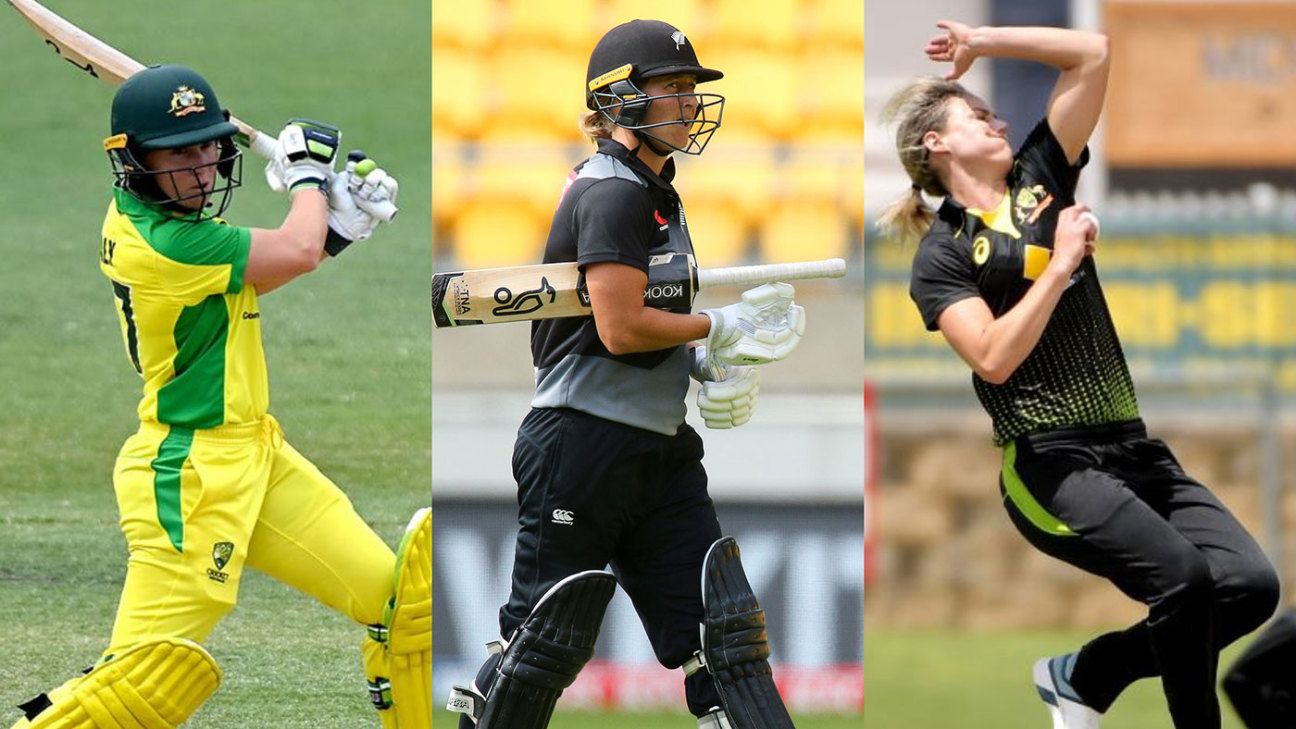There are pace bowlers to keep an eye on and the superb Amelia Kerr
Australia will return to action for the first time in almost six months with another Trans-Tasman battle against a struggling New Zealand side. The main focus for the next 12 months will be one-day cricket ahead of the World Cup, but with a Commonwealth Games next year, T20 cricket continues to hold plenty of importance. Here are a few things to watch for over the next six games
Australia’s aggression
Matthew Mott has spoken about Australia pushing their boundaries. There is unlikely to be huge change to their approach to T20 cricket – they are a well-oiled outfit that rarely takes a backward step – but it will be interesting to watch their approach in the ODIs with a view to next year’s World Cup. There was a glimpse in the final match of the previous series where they racked up 325 in Brisbane; a blistering start led by Alyssa Healy capped off by a powerful finish from the middle order. When batters such as Jess Jonassen and Georgia Wareham make up the lower order there is immense depth to allow orders to play with freedom. If conditions and opportunity presents they have a batting line-up capable of large totals.
Pressure on Devine
New Zealand need their captain to step up. Sophie Devine had a poor return against England with scores of 16, 6, 15, 2, 8 and 0 across six innings into the ODIs and T20Is. Kirsty Bond, a former New Zealand player and selector, recently suggested a change of captaincy was needed to revive both Devine’s and the team’s fortunes. “I know that my performances haven’t been up to scratch in the last series, but look, I more than back myself in terms of leading this team at this moment,” was Devine’s response. The prize of captaincy your country in a home World Cup is significant and it would seem unlikely there will be a change of leadership, but without doubt New Zealand need Devine’s runs.
The pace pack
Australia are excited about the pace-bowling resources they have coming through. Tayla Vlaeminck is back after a long injury while the uncapped Darcie Brown can bowl rapid outswingers. There is a sense Australia want to reshape their attack from the spin-dominated unit (which has been very successful) to one that has more speed on offer – a point of difference, as Rachael Haynes called it. Pushing the speedgun is one of the areas of significant development in the women’s game and, unsurprisingly, Australia want to make sure they are ahead of the rest.
Who will help Amelia Kerr?
It is easy to forget that Amelia Kerr is still only 20. She is both a senior figure in the New Zealand side and a key part of the future stretching many years ahead. It is no surprise that the two most recent victories they have managed – the third ODI against England and the third T20I against Australia in September – came with starring roles from her. But she needs others to develop around her. Oppositions are becoming smart at negotiating her overs with minimal damage (her excellence means they don’t always manage it) then cashing in elsewhere but it has been a positive move to elevate her in the batting order. The return of offspinner Leigh Kasperek (who missed the tour of Australia due to travel restrictions) has been a boost while Lea Tahuhu’s comeback will help the one-day side.
Has Perry got her mojo back?
What will the next phase of Ellyse Perry‘s international career look like? She is one of the greatest players the game has seen and there is plenty of time to further enhance her standout numbers, but there is now more competition than ever. This will be her first international cricket in more than a year during which she has come back from a serious hamstring injury. In the WBBL her batting strike-rate was a talking point while she claimed just eight wickets with an economy rate of 8.25 and then in the WNCL, where she scored three consecutive fifties, she claimed just two wickets in six matches as she got used to some tweaks to her action. Will the two elements of her game come together on this tour?
No. 22
The first ODI next month will give Australia the chance to set a new record for consecutive wins after they equaled the mark of 21 of Ricky Ponting’s 2003 side. Many of the results in that run have not been close. The team talk of the record as not much more than a headline that others make, a result of them keeping a singular focus on their next match. But they do often recall the pain of the 2017 ODI World Cup when they lost in the semi-final to India. Since then, making amends for that has been high on the agenda. The results, so far, have been outstanding although it’s what happens next year that will decide whether it’s mission accomplished.
Andrew McGlashan is a deputy editor at ESPNcricinfo
